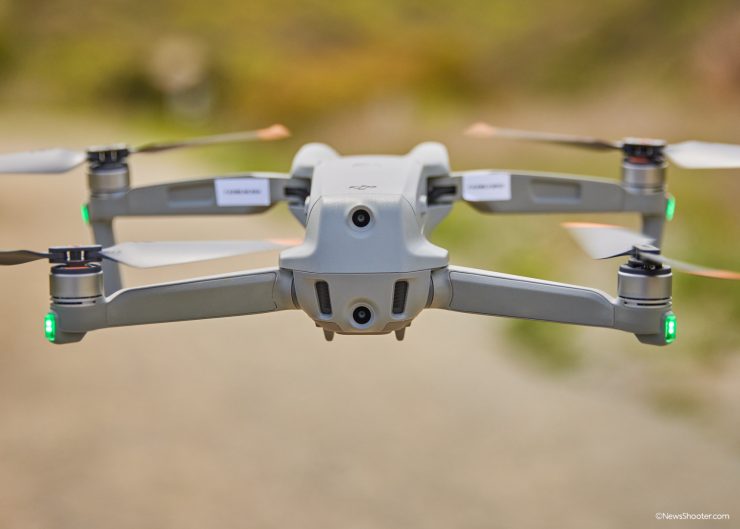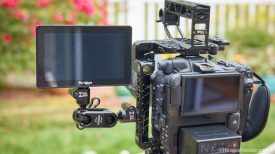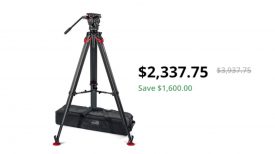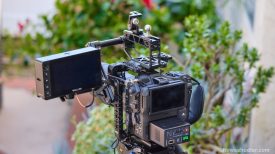
DJI updated the popular Mavic Air 2 with a 1″ sensor and a new name. The Air 2S. The body and many features are similar; however, the flight time has decreased by a few minutes due to the larger sensor and camera. The new Air 2S comes in at 595 g, while the Mavic Air 2 is 25 g less at 570 g. I think most people will appreciate that trade-off for the 1″ sensor.
1″ 20MP Sensor
DJI states the Air 2S is the first drone of its size to be able to capture 20-megapixel still images or 150 Mbps video in 5.4K at 30fps or 4K at 60fps with the use of that new 1-inch CMOS sensor and 22mm wide-angle lens.
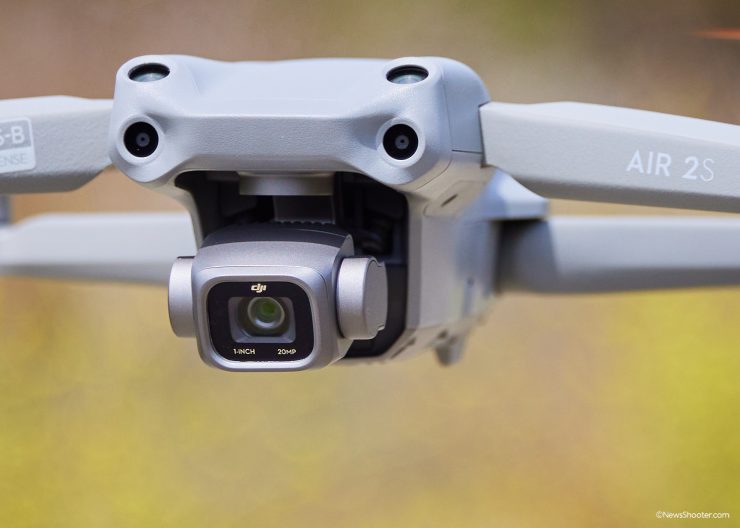
The camera can record in 10bit D-log and RAW format photos with a dynamic range of up to 12.6 stops.
A new digital zoom supports 4X at 4K 30fps, 6X at 2.7K 30fps, 4X at 2.7K 60fps, 6X at 1080P 60fps, and 8X at 1080P 30fps. No SDcard? No problem, as it includes 8 GB of internal storage.
You can record in H264 or H265, depending on your preferences for image quality and storage capacity. You can also choose from three video color profiles, Normal (8 bit), D-Log (10 bit), or HLG (10 bit). It’s great to see in a consumer drone the ability to shoot 10bit and have a log option. This makes the Air 2S very tempting for occasional professional use if you are a licensed pilot.
| DJI Air 2S | Camera |
| Sensor | 1″ CMOS Effective Pixels: 20 MP; 2.4μm Pixel Size |
| Lens | FOV: 88° AF, 35 mm Format Equivalent: 22 mm Aperture: f/2.8 Shooting Range: 0.6 m to ∞ |
| ISO Range | Video: 100-6400 (Auto) 100-12800 (Manual) 10-Bit Dlog-M Video: 100-1600 (Auto) 100-3200 (Manual) Photo: 100-6400 (Auto) 100-12800 (Manual) |
Still Image Size | 20 MP 5472×3648 (3:2) 5472×3078 (16:9) |
Still Photography Modes | Single shot: 20 MP Burst shooting: 20 MP (continuous burst) Auto Exposure Bracketing (AEB): 20 MP, 3/5 bracketed frames at 0.7 EV bias Timed: 20 MP, 2/3/5/7/10/15/20/30/60s SmartPhoto (including HDR and HyperLight): 20 MP HDR Panorama: Vertical (3×1): 3328×8000 (width×height) Wide-angle (3×3): 8000×6144 (width×height) 180° (3×7): 8192×3500 (width×height) Sphere (3×8+1): 8192×4096 (width×height) JPEG/DNG (RAW) |
| Video Resolution | 5.4K: 5472×3078 @ 24/25/30 fps 4K Ultra HD: 3840×2160 @ 24/25/30/48/50/60 fps 2.7K: 2688×1512 @ 24/25/30/48/50/60 fps FHD: 1920×1080 @ 24/25/30/48/50/60/120 fps MP4/MOV (H.264/MPEG-4 AVC, H.265/HEVC) |
| Max Video Bitrate | 150 Mbps |
| Digital Zoom | Zoom recording is not available while recording 10-bit videos and 120fps videos. 4K/30fps: 4x; 2.7K/60fps: 4x; 2.7K/30fps: 6x; 1080p/60fps: 6x; 1080p/30fps: 8x |
O3 image transmission
The advantages of O3 image transmission are high-definition, low-latency, and stronger anti-interference. Upgraded from a dual-antenna system to four antennas, O3 uses a new generation of transmission technology to extend the transmission range to 12 km with improved anti-interference capabilities.
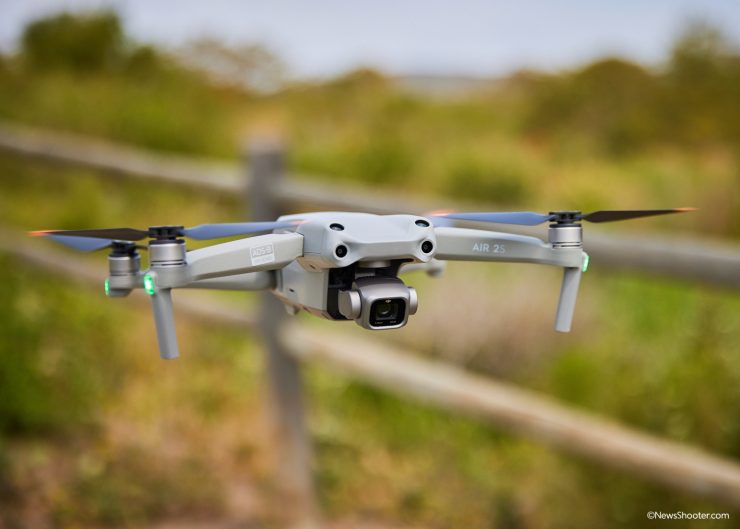
Key features
- The 1-inch sensor (2.4um pixels and a 22mm equivalent focal lens) camera retains vivid colors and light.
- 5.4K Ultra HD video and 4K/60fps videos.
- 150 Mbps 10bit D-log videos and RAW format photos with a dynamic range of up to 12.6 stops provide more possibilities for post-editing
- Intelligent HDR improves internal algorithms, allowing users to create amazing shots without post-editing
Intelligent Shooting Modes
MasterShots: Professional-level aerial footage has never been easier. After activating MasterShots, the drone will autonomously plan a flight path, choose from three different image capture modes, including Proximity, Portrait, or Landscape, and start recording classic aerial footage. Pilots can choose different themes, and the DJI Fly app will generate a unique video that’s ready to be shared with the world.
Spotlight 2.0: Frame to select the subject, and the aircraft will control the gimbal to track the subject, keeping it in the center of the frame while recording. All you need to do is control the aircraft. This makes camera movement a lot easier, and users can focus on pulling off that epic shot.
ActiveTrack 4.0: Frame to select the subject, and the aircraft automatically controls the gimbal and flies autonomously to track the subject from a safe distance. Thanks to a more optimized obstacle avoidance algorithm and a wider sensing range, the footage will be even more professional and ready to use.
Point of Interest (POI 3.0): The aircraft tracks the subject in a circle based on the radius and the flight speed that is set, whether the subject is a person, car, boat, or building.
QuickShots
Getting usable footage is easy with pre-programmed moves. One downside is the resolution drops to full HD and uses H.264 compression even if the drone is set to 4K.
- Dronie
The aircraft flies backward and ascends, with the camera locked on the subject. - Rocket
The aircraft ascends with the camera pointing downward. - Circle
The aircraft circles around the subject. - Helix
The aircraft ascends and spirals around the subject. - Boomerang
The aircraft flies around the subject in an oval path, ascending as it flies away from its starting point and descending as it flies back. The starting point of the aircraft forms one end of the long axis of the oval while the other end of the long axis is at the opposite side of the subject from the starting point. Make sure there is sufficient space when using Boomerang. Allow a radius of at least 30 m around the aircraft and allow at least 10 m above the aircraft. - Asteroid
The aircraft flies backward and upward, takes several photos, and then flies back to the starting point. The video generated starts with a panorama of the highest position and then shows the descent. Make sure there is sufficient space when using Asteroid. Allow at least 40 m behind and 50 m above the aircraft.
ND Filters
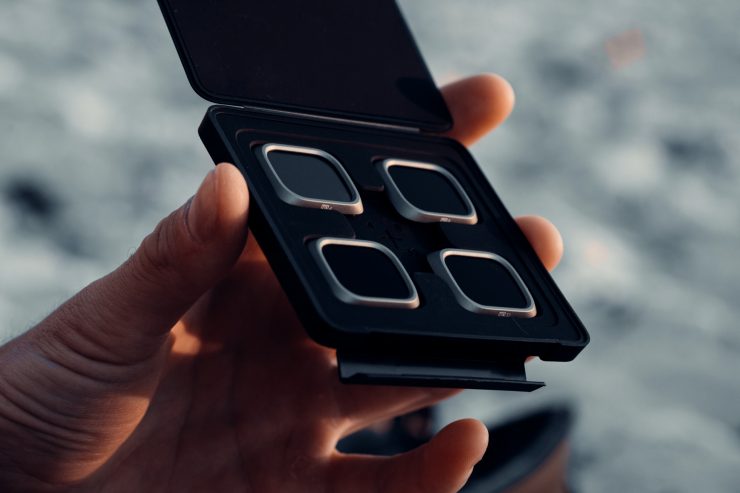
For controlling the f/2.8 fixed aperture at a 180-degree shutter, you will need some ND filters. The Fly More Combo Includes is a 4, 8, 16, and 32 stops ND filter kit. This is a must-have to avoid riding the shutter.
Flight Time
A full battery will deliver up to 31 minutes of flight time. A full charge takes about 70-80 minutes. To check the level, press the button on the battery once.
Advanced Safety
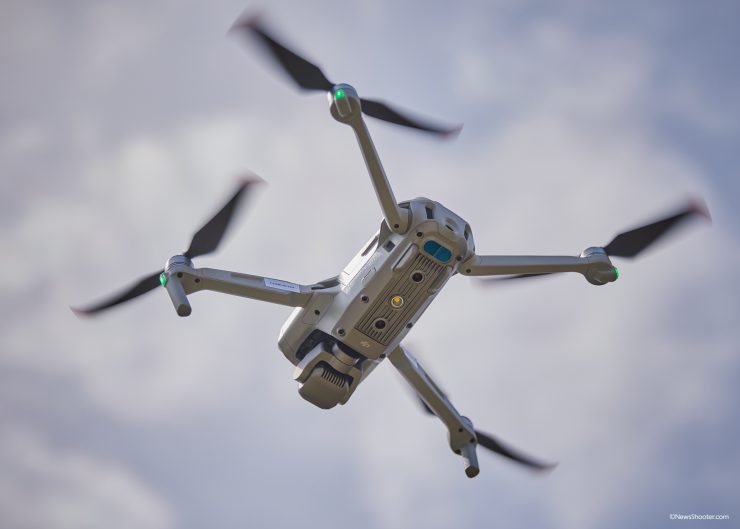
DJI states APAS 4.0 is the most advanced autopilot system on any DJI drone. It maneuvers around objects autonomously. O3, DJI’s third iteration of OcuSync, delivers a stable feed at a maximum distance of 12km, even in areas with a high number of signals.
Four-Way Sensors
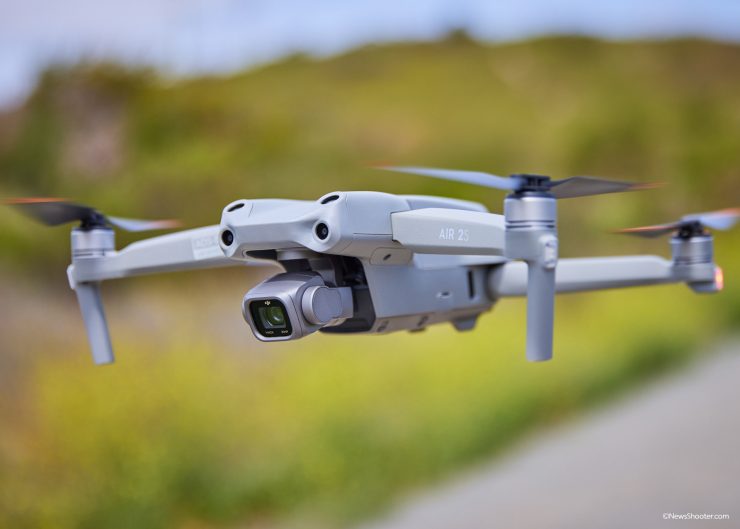
Four-way sensors help reduce the risk of collision. The newly upgraded front, rear, bottom, and top obstacle sensors incorporate binocular zooming technology to recognize incoming objects further away at faster speeds. Advanced Pilot Assistance System (APAS) 4.0, allows the Air 2S to autonomously maneuver around, under, and over obstacles.
While flying at normal speeds, the newly improved APAS 4.0 offers a wider field-of-view to detect obstacles compared to previous versions. At higher speeds, the drone’s angle pitches forward more, and the newly added upward obstacle sensor plays a critical part in assisting obstacle detection.
AirSense System
Air 2S’s AirSense system warns drone pilots of nearby airplanes and helicopters transmitting ADS-B signals so that the drone can be quickly moved. OAs with other DJI drones a safety feature includes an improved Return-To-Home (RTH) feature, which brings a drone back to its launch point if it loses contact with the controller or reaches a critically low battery level, and the GEO 2.0 geofencing system to advise pilots of sensitive locations and help them automatically keep away from high-risk areas such as airports. DJI Air 2S uses the latest version of the DJI Fly app.
Who is the Air 2S For?
While DJI is marketing the Air 2S as a consumer drone, having a higher quality camera makes it tempting for pro use and just for fun. Since the size is relatively small and packs down easily, it can be great for traveling.
Where Can You Fly?
Like all drones, you will not be able to fly in restricted areas and will need a license to use the Mavik Air 2S professionally due to the 595 g weight. Drones 250g and below are considered recreational, like the DJI Mavic Mini 2 that is 246 g.
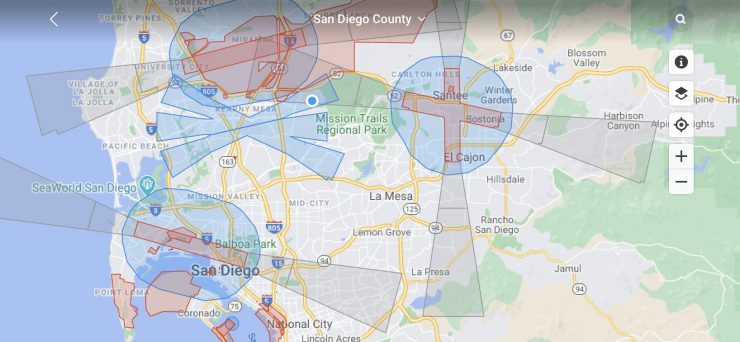
Here in San Diego, it’s not easy to just fly. We have many small airparks and several military bases, making finding an easy location to practice tougher. I suppose this is a similar situation for people that live in a big city.
The Air 2S is an impressive little drone that is fun to fly and captures high-quality footage. It tics a lot of boxes, especially for a consumer drone. I love that it has 10-bit recording. H.265 isn’t the easiest codec to edit, but it produces a fairly small file that can easily be transcoded if necessary.
The new Motion Controller and DJI Goggles v2 are not compatible with the Air 2S at this time.
While the controller offers a Cine mode I found it to have a lot more speed and hard to actually get slow moves. I will admit that I’m not a very good drone pilot and maybe I need more practice, but flying the Air 2S is a lot of fun.
Price and Availability
DJI Air 2S is available for purchase today in two configurations.
The standard combo retails for $999 USD and includes the following.
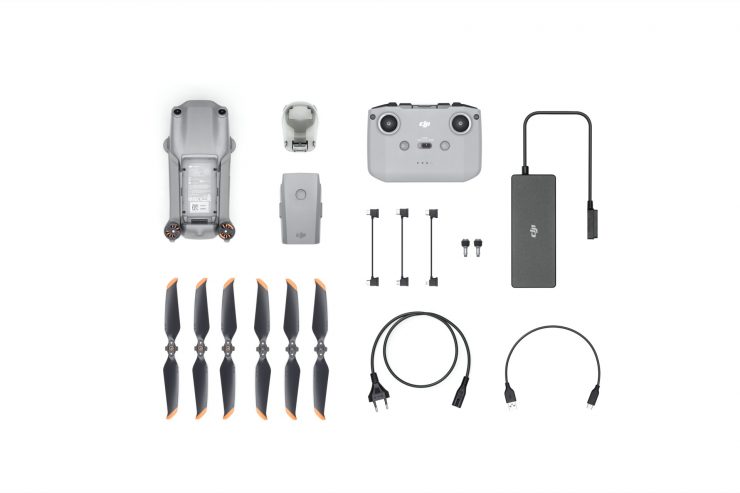
- Air 2S drone
- remote controller
- one battery
- all the cables & parts needed to fly
The Fly More Combo retails for $1299 USD and includes everything from the standard combo plus the following.
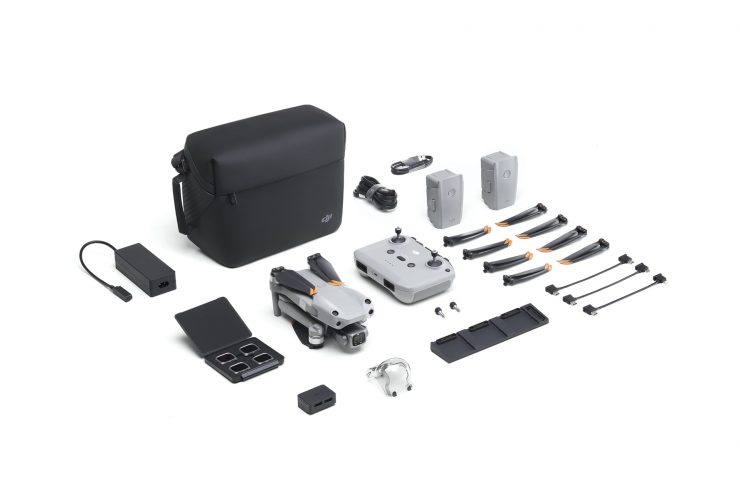
- Air 2S drone
- remote controller
- three batteries
- 4, 8, 16, and 32 stop ND filter kit
- charging hub
- shoulder bag
- all the cables & parts needed to fly
Like what we do and want to support Newsshooter? Consider becoming a Patreon supporter and help us to continue being the best source of news and reviews for professional tools for the independent filmmaker.

